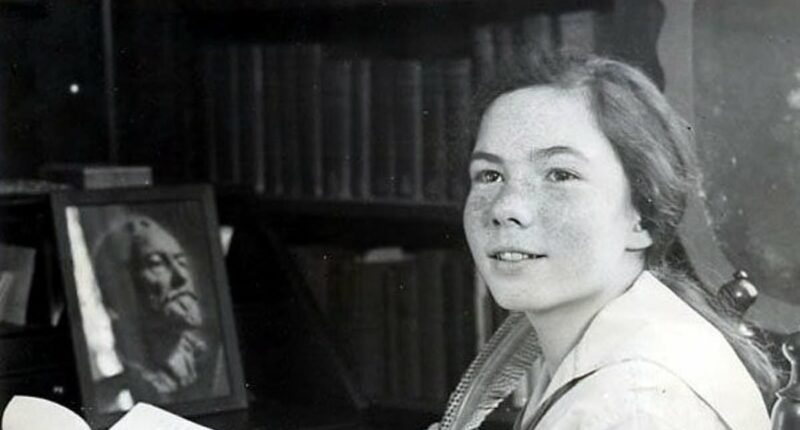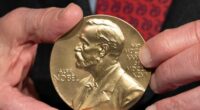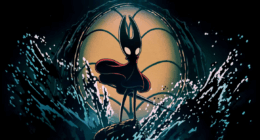Share this @internewscast.com
By the age of 12, Barbara Newhall Follett was a celebrated author and renowned child prodigy.
At 25, she disappeared never to be seen or heard from again.
Her half nephew Stefan Cooke has dedicated almost the last 15 years of his life to researching and getting to know his aunt and honoring her legacy.
He told Daily Mail: ‘That’s gonna be my job. To get her her story out there again because it’s such a great story…
‘I wanted people to appreciate the wisdom that she had at such an early age.’
Through his publishing company Farksolia he has managed to release her final novel Lost Island, her letters, and reissue her second book The Voyage of Norman D.
He has also tried to piece together what was going on with her in the lead up to her disappearance and has his own theory on what happened to her.
Born in New Hampshire in 1914, Barbara was the daughter of a writer and a scholar.
Her father Wilson, Cooke’s grandfather, worked at Dartmouth, Brown, and Yale. Her mother Helen was a writer, according to Vice.

Barbara Newhall Follett was a celebrated author by the age of 12, but disappeared without a trace when she was 25

She was the daughter of an Ivy League scholar and a writer, who homeschooled her and socialized her mostly among adults
Barbara was intelligent and began reading and writing very young. She was homeschooled and mostly socialized with adults.
Her mother’s accounts of her say that her literary talents blossomed early.
She often wrote letters to friends and family, mostly adults. Her main inspiration was the natural world around her.
By just six-years-old she had written her first 4,500 word short story.
Her first novel was finished only two years later.
Unfortunately, her first manuscript was lost in a housefire, but she was unable to shake Eepersip so she rewrote the whole book.
Cooke said: ‘To write a novel length book and then to have her manuscript burn up in the house fire.
‘Its only copy lost. And then to re-create it I mean, that shows a great level of dedication.’

Barbara Newhall Follett
Her first book – House Without Windows and Eepersip’s Life There – was published when she was 12 years old.
Barbara described it this way: ‘It’s about a young girl named Eepersip who lived atop Mount Varcrobis and felt so isolated that she decided to live wild.’
‘She talked to the animals, and led a sweet lovely life with them – just the kind of life that I should like to lead.’
The book was called ‘unbearably beautiful’ by critics.
In a New York Times article, one reviewer said: ‘It is hard not to wax enthusiastic over this wonderful little book.’
She later embarked on a 10-day trip to Nova Scotia with a family friend. Upon her return, she published another book inspired by her journey, titled The Voyage of the Norman D.
By 14, she was considered a child prodigy.
But a tragic turning point came in Barbara’s life when her father left their family for his company’s secretary, devastating Barbara.

Her debut novel told the story of a girl who ran away from her family to live in the wilderness

She took a 10 day excursion to Nova Scotia and wrote her second book loosely based on her travels
Cooke is the grandson of Wilson Follett and his mistress. His mother, Jane Follett Cooke was the first child in Wilson’s second marriage.
Barbara and her mother grew very poor and distraught without him. After a tumultuous trip together, the two became estranged.
Barbara stayed with friends in California while she received psychiatric care and enrolled in junior college.
Soon after, she ran away to San Francisco and was captured by the police for refusing to return to a guardian. She was only 15 at the time.
She shared with the local newspaper: ‘I left because I needed to be free. Under the plans set for me, I felt completely constrained, almost desperate.’
‘I did not want to enter college nor live the standardized existence. I have never been to school in my life.
‘Perhaps I might like it – I do not know. But this I know: I do not want to like it.’
She later returned to the east coast and began her third novel. She met Nickerson Rogers in 1931 and eventually married him.

She went missing at 25 years old and has not been seen or heard from since
But a few years later she discovered that he was having an affair. Despite her efforts, she realized their marriage could not be salvaged.
So, Barbara left her apartment one day in 1939 with $30 in her pocket, never to be seen again.
Her husband waited two weeks before reporting her missing, and did so using her married name. As a result, no one connected her to the renowned author until many years later.
Cooke commented: ‘Barbara was there in the 1920s and early 1930s, working tirelessly to forge ahead. She did so admirably and I’m incredibly proud of her, the progress she made, and the courage she demonstrated.’
Her own mother didn’t find out that she was missing until the 1940s.
The reason for her disappearance is still a mystery. Some people speculated suicide, others thought she’d taken the same fate of Eepersip. A few even point to murder, either by her estranged husband or someone else.
In November of 1948, a deer hunter found human remains tangled in tree roots near Squam Lake – a sanctuary of Barbara’s – that appeared to have been there for multiple years and belonged to a woman.
While a Harvard pathologist determined that the remains belonged to a local girl who’d gone missing years prior, discrepancies led Stefan to believe that the body may have belonged to his aunt.

Stefan believes that his aunt died by suicide but does not have solid proof
The glasses were found with the body when the girl wore none, the shoes were a size and a half too big, and none of the belongings could be identified by the family.
Cooke said that when he found out about the body: ‘My heart sank and I was 99 percent sure that this was Barbara’s remains.’
The remains that he believed were hers have vanished too.
Cooke said: ‘When I started this research, I did think that Barbara might have started a new life at the age of 25 with a new identity. I spent a lot of time imagining what might’ve happened to her.’
His theory now is that Barbara took a train to Plymouth, Massachusetts, staying the night at barn she and her husband rented to think things over.
The next morning she walked to her favorite lake and hugged her favorite tree then died by suicide.
Stefan made a website devoted to his half-aunt, where he has documented her life and history.
Commenters frequently chime in to share their theories on her disappearance.

Cooke said of his late aunt: ‘She was capable of absolutely anything.’

Many people have theorized about what happened to her, wondering if she died by suicide, was murdered, or disappeared to live a new life
One wrote: ‘It occurred to me, too, that Barbara may have adopted a new identity and penned some work under a pseudonym.
‘I thought it most likely that she would have gone back to writing children’s books, since she’d had success with that but none of her adult stories.
‘So I dug around trying to find anything about a writer of children’s books during that period–somebody whose identity may have been a secret or mystery–and could find no one that fit that description.’
Another guessed: ‘It was December of 1939 and the War was raging in Europe. She knew how to sail.
‘Cut her hair short, assume a male name, the British won’t ask many questions about Able Seamen willing to ship aboard a tramper for the North Atlantic run. Wild? Perhaps, but she had the skill, and the imagination.
‘I don’t see it as any less likely than a murder for which there’s no proof either. In a strange way, she lived her art… Vanishing as the world descended into war into a moment of infinite potentials. I hope she came out to a good one.’
A third said: ‘I have read a lot about Barbara and it really sounds like there may have been foul play on Nick’s part. It sounds like he felt trapped in a marriage while in love with someone else.’
Cooke said he thinks her husband was unhappy and wanted a divorce but did not have anything to do with her disappearance.
Cooke has his theories but said of his late aunt: ‘She was capable of absolutely anything.’






